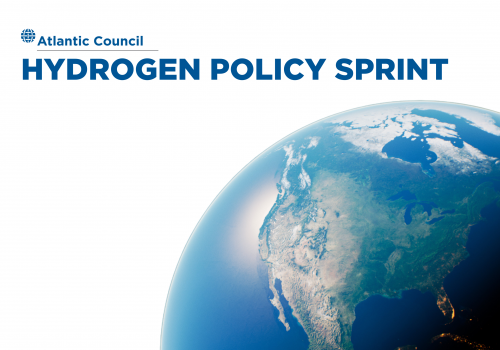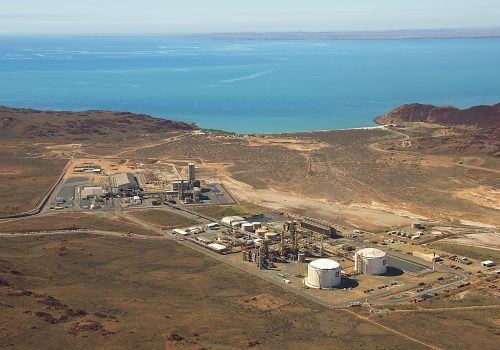Brief 3: Hydrogen transportation and storage
The Atlantic Council Hydrogen Policy Sprint explores opportunities and challenges for the development of a clean hydrogen economy in the United States. This third brief discusses pathways for hydrogen transportation and storage infrastructure development in the United States. Author Cynthia Quarterman explores the various modes available for the storage and transportation of hydrogen—from pipeline and rail to maritime—and how policymakers can support the development of a robust hydrogen infrastructure system that can support the broad deployment of clean hydrogen in the United States.
Key takeaways
- The United States already has over 1,600 miles of hydrogen pipelines, one of the most extensive hydrogen pipeline networks in the world.1 It also has the world’s largest transportation and storage network for fossil fuels. The existing transportation and storage infrastructure in the United States makes it physically ready to lead the world in hydrogen development.
- For the transition to hydrogen to be successful, it will be necessary, at least initially, to create regional hydrogen clusters that can scale clean hydrogen production and host demand centers without requiring a major buildout of long-distance hydrogen transportation infrastructure. For long-term success, those regional centers must eventually grow to form an interconnected national network. The existing fossil fuel transportation and storage hubs in the United States could easily host regional hydrogen clusters that quickly evolve into a national network.
- Despite all of its advantages—from existing infrastructure to resources for production—the United States will have to embrace hydrogen usage more affirmatively, especially in the realm of policy, in order to make hydrogen a viable alternative energy option. The first step forward would be to identify all potentially interested stakeholders from the public and private sectors and host a planning summit to set forth a strategic hydrogen vision, including identifying potential regional hydrogen hubs and associated transportation and storage options.
Hydrogen has gained significant momentum in recent months as governments and private sector leaders have announced new policies, projects, and investments, and it will be critical to the world’s ability to reach net-zero by midcentury. But the United States has lagged behind Europe and Asia in political support, market certainty, and new project development for clean hydrogen.
In order for hydrogen to become a viable decarbonization solution in the United States, a narrative shift and a framework of policies that can enable its deployment are needed. The Atlantic Council’s hydrogen policy sprint will include five briefs and a final report: the first two focus on pathways and challenges for clean hydrogen production, the third will focus on storage and transportation infrastructure, the fourth and fifth on hydrogen demand and deployment, and the final report will summarize the opportunities and challenges and explore how state and federal policies can spur the development of a clean hydrogen economy in the United States.
Brief author

The Global Energy Center develops and promotes pragmatic and nonpartisan policy solutions designed to advance global energy security, enhance economic opportunity, and accelerate pathways to net-zero emissions.
Image: Photo: Shutterstock/Chris J. Mitchell


